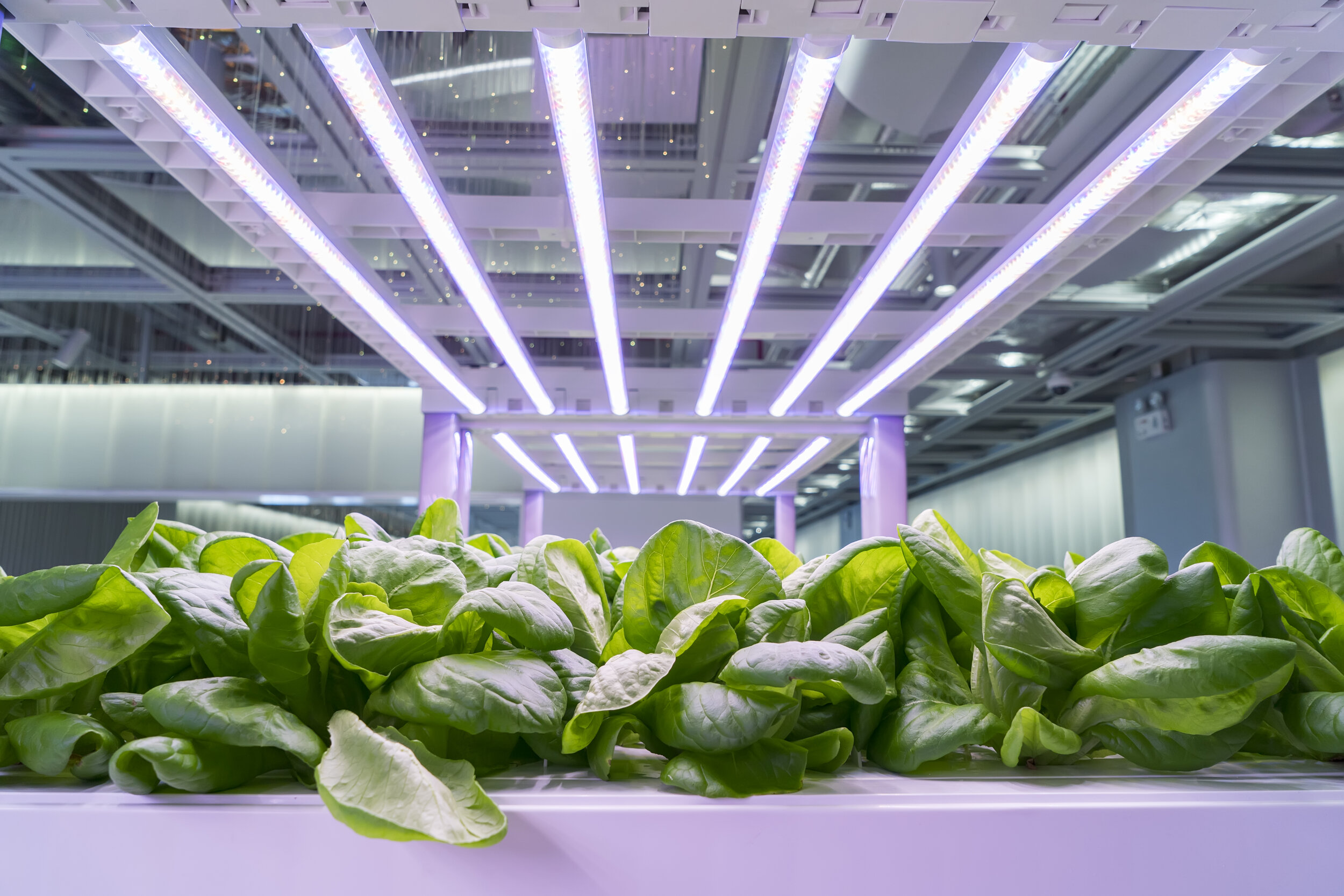What Grow Lights to Use For Hydroponics
You’ve had a bright idea…
So, you’ve decided to grow indoors. Perhaps you want to grow flowering tropicals in your office or start a little greenhouse in the backyard. Or maybe you just want to keep alive that house plant you’ve been torturing for the last 6 months. Whichever it is, you’re growing, green friends need light. But which grow light to use?
“Watts” the Difference Between Grow Lights?
Choosing a bulb comes down to 3 basics types: Fluorescent, HID and LED. Things to consider are watts, lumens and operating temperature.
Watts measure the amount of energy required to power a bulb, whereas lumens measure the amount of light produced. Lumens per watt determine efficiency. HIDs (High Intensity Discharge) appear the brightest and LEDs are the most efficient.
Also, different types have different operating temperatures. The hotter the bulb, the further away from the plants it must be to avoid burns, both to you and the plants. The basic rule is to position your bulb as close to the plant as is safe to maximize the light reaching said plant. Remember, the further away from the plant, the lower the intensity of light. Fluorescent bulbs run the coolest in temperature.
Here’s a quick rundown.
|
|
Color Temp. (Kelvins) |
Light Output (Lumens) |
Heat Output |
Growing Phase Use |
|
CFL Low-Watt |
ANY |
1000 – 1600 |
Very Low |
Houseplants |
|
CFL Mogul Base |
2200 – 6500 |
8000 – 12,000 |
Burns Within 6” |
ANY |
|
T5 Fluorescent |
2000 – 65,000 |
Depends on Length 2000 – 6000 |
Very Low |
Propagation and Houseplants |
|
MH |
4000 – 10,000 |
24,000 – 120,000 |
Burns Within 12-18” |
Vegetative |
|
HPS |
1800 – 3000 |
30,000 – 145,000 |
Burns Within 12-18” |
Flowering |
|
Dual Arc Hybrid |
≈3000 |
≈110,000 |
Burns Within 12-18” |
ANY |
|
Double Ended |
2000 – 14,000K |
91,000 – 160,000 |
Burns Within 24” |
ANY |
|
LED Fixtures |
ANY |
Depends on Size of Fixture |
Very Low |
ANY |
Let’s throw a little light on the subject…
CFL Grow Lights
CFL grow lights are a fluorescent-style tube compressed into the size of a standard incandescent light bulb.
A 23 watt CFL is the equivalent of a 100 Watt incandescent, giving off 1600 Lumens. This is bright enough for any traditional indoor plant if placed close enough. These are good choices for offices and living quarters where space is limiting, as they are small enough to fit any regular fixture and won’t burn plants or skin if touched.
Mogul Base (E39) CFL grow lights may look bulky, but they have the benefit of having a ballast built directly in to the base. While initially more expensive than similar metal halides, they’re excellent for shops, propagation tables and small growing areas.
T5 Grow Lights
T5 fluorescent grow lights come in a range of lengths, but the real advantage is that the fixtures for these tubes can be less than 3” tall. This is perfect for maximizing growing space by using multiple grow units vertically on shelves. These are the most efficient standard fluorescent tubes available (use about 24 watts for 2000 lumens). They have excellent light dispersion when used with reflectors and are more efficient than mogul base CFLs.
Metal Halide Grow Lights
MH grow lights are the industry standard. Very high-output, they are excellent for larger grow rooms and greenhouses. MH lamps are more efficient than fluorescent, incandescent and CFL bulbs of the same wattage. They are often compatible with dimmable ballasts.
HPS Grow Lights
HPS grow lights are widely used for outdoor area lighting, large grows rooms and greenhouses. These bulbs are probably the most efficient HID bulb one can get, though initially more expensive than CFLs and MHs.
Dual Arc Hybrid Grow Lamps
What happens if you take a 400W MH lamp and 600W HPS lamp and smash them together? Hint: the answer isn’t broken glass and gas burns. It is in fact the dual arc hybrid lamp. It contains both MH & HPS lamps within the same bulb. While they will fit the same fixtures as their parents, dual arc lamps are significantly more expensive than MH or HPS grow lights of equal output. The advantage to dual arc is even distribution of red and blue light over the growing area, making them excellent for larger grow rooms and greenhouses.
Double Ended HID Grow lights
Double ended HIDs mostly have similar advantages and disadvantages as single ended bulbs, with some slight differences. Despite needing special double ended fixtures, they can use the same ballasts as regular MH/HPS lamps. They are also more efficient, so for the same number of bulbs and ballasts you would get more light output. They are also more expensive, but you could use fewer of them for the same light output.
LED Grow Lights
LED grow lights are excellent for propagation, herbs and leafy greens. They come in a variety of sizes, colors, and compositions. Most often LEDs have blue and red diodes together in an array to maximize plant growth and get the benefits of the full spectrum. More efficient than any HID, LEDs will save you lots of money over time, yet they are one of the most expensive options initially.
Whatever you are trying to grow inside, there is a bulb to suit your plants and your budget. Don’t be in the dark about your grow lights. If you have more questions about what bulb, ballast or reflector you need, our knowledgeable staff is ready to help. Check out our grow lights, fixtures and more on our hydroponics page.












